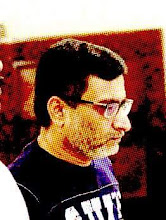 Tintin , the evergreen young globtrotting reporter, has captivated generations of readers, and continues to do so. The great success has been attributed to Herge, the creator's genius in bringing together some fabulous ingredients such as a clear story, a free and smooth flow, attention to reality, be it the script or the art, pleasing soft colors, and above all to the style of art he invented, later to be called, the Clear Line.
Tintin , the evergreen young globtrotting reporter, has captivated generations of readers, and continues to do so. The great success has been attributed to Herge, the creator's genius in bringing together some fabulous ingredients such as a clear story, a free and smooth flow, attention to reality, be it the script or the art, pleasing soft colors, and above all to the style of art he invented, later to be called, the Clear Line.Clear Line, uses lines of uniform thickness(rather thinness) to show the outlines, the contours, the change of planes of the form, leaving out tones and other such details. The technique of 'feathering' used extensively by the great Alex Raymond is totally missing(no comparisons here.. Alex was a giant, his realistic rendering took comics art to grander levels). This produces in itself a certain clarity and hence simplifies the whole thing amazingly. Herge followed this clarity into the story line as well.

Herge used this style in all of his art, and went on to create a following in the comics creating world, spawing the use of Clear Line. Perhaps the most famous being The Simpsons..

Paul Gravett, has a couple of captivating articles on this interesting topic at his wonderful site, read more here.

Paul Gravett, has a couple of captivating articles on this interesting topic at his wonderful site, read more here.
Here are couple of awesome videos throwing more light on the ligne claire movement...



